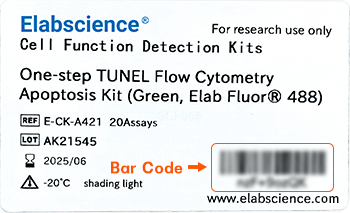CXCL14 Polyclonal Antibody (AN006120L)

For research use only.
| Verified Samples | Verified Samples in IHC: Human kidney |
| Dilution | IHC 1:150-1:300 |
| Isotype | IgG |
| Host | Rabbit |
| Reactivity | Human |
| Applications | IHC |
| Clonality | Polyclonal |
| Immunogen | Recombinant Mouse CXCL14 protein expressed by E.coli |
| Abbre | CXCL14 |
| Synonyms | Scyb, CXCL, Bolekine, MIP-2G, NJAC, Cxcl14 Bmac, Kec, Ks1, Mip2g, Scyb14, Bmac, Cxcl14 |
| Swissprot | |
| Cellular Localization | Secreted |
| Tissue Specificity | Highly expressed in brain, lung, ovary, muscle and in kidney and liver parenchyma, and at lower levels in bone marrow. |
| Concentration | 1 mg/mL |
| Buffer | PBS with 0.05% Proclin300, 1% protective protein and 50% glycerol, pH7.4 |
| Purification Method | Antigen Affinity Purification |
| Conjugation | Unconjugated |
| Storage | Store at -20°C Valid for 12 months. Avoid freeze / thaw cycles. |
| Shipping | The product is shipped with ice pack, upon receipt, store it immediately at the temperature recommended. |
| background | CXCL14/BRAK, also named MIP-2 gamma, KEC (kidney-expressed chemokine), and BMAC (B cell and monocyte-activating chemokine), is a member of the CXC chemokine superfamily. The deduced 99 amino acid (aa) residue precursor has a 22 aa putative signal peptide that is cleaved to produce the 77 aa mature protein. Mature human and mouse CXCL14 differ by only 2 residues. Mouse CXCL14 shares approximately 30% aa sequence identity with mouse MIP-2. Unlike MIP‑2, CXCL14 lacks the ELR domain preceding the CXC motif. CXCL14 transcripts are constitutively expressed at high levels in the basal layer of epidermal keratinocytes and dermal fibroblasts of skin tissues as well as lamina propria cells in normal intestinal tissues. CXCL14 has been shown to be a highly selective chemoattractant for monocytes that have been treated with prostaglandin E2 or forskolin, agents that activate adenylate cyclase. CXCL14 has been proposed to be important in regulating the trafficking of macrophage precursor to regions in skin and mucosal tissues that support their development. Consistent with this hypothesis, macrophages were frequently found to co-localize with CXCL14-producing cells in the dermis and lamina propria. |
Other Clones
{{antibodyDetailsPage.numTotal}} Results
-
{{item.title}}
Citations ({{item.publications_count}}) Manual MSDS
Cat.No.:{{item.cat}}
{{index}} {{goods_show_value}}
Other Formats
{{formatDetailsPage.numTotal}} Results
Unconjugated
-
{{item.title}}
Citations ({{item.publications_count}}) Manual MSDS
Cat.No.:{{item.cat}}
{{index}} {{goods_show_value}}
-
IF:{{item.impact}}
Journal:{{item.journal}} ({{item.year}})
DOI:{{item.doi}}Reactivity:{{item.species}}
Sample Type:{{item.sample_type}}
-
Q{{(FAQpage.currentPage - 1)*pageSize+index+1}}:{{item.name}}





